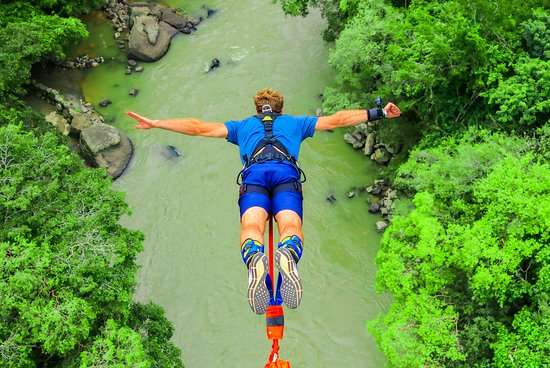Contents
With the implementation of biometrics, travelling is today far more secure and less time-consuming compared to the old years. It is now possible to see fingerprints and face recognition as popular methods used at airports and border checks to identify a person. It makes the process much faster than the old one, and the biometrics themselves are impossible to counterfeit.
Every day, travel and biometrics are changing the ways that identities have to be confirmed. While before airports and security agencies would depend on a formal identification like passports or any other documents, today this is considered incorrect, substituted by a fingerprint or facial recognition. Effectively, this advanced system helps to make travel safer, faster, and less dependent upon paperwork.
What Are Biometrics?
Biometrics is the process of identification it includes fingerprints, face recognition, Iris recognition and voice recognition. Biometric systems differ from other forms of identity, including passports and identification cards, since they use the physical characteristics of a person, which cannot be faked. It also makes it a secure way of identifying someone and that is why it’s widely used.
How Biometric Technology Supports the Mobility
Biometric technology is now integrated into the travel industry more than ever before. Passports and even boarding gates are equipped with fingerprint or face recognition, or without using documents at all when crossing the airports and controls at the border.
Below are some key ways in which biometrics are being used:
Check-In and Boarding
Global standards of data protection are changing and many airlines already employ facial recognition to enable passengers to check in and board a flight without their passports. Passengers’ faces are captured by cameras and the information is compared to the database of travellers that includes personal records, which then helps board travellers faster.
Border Control
Biometric systems at border control compare fingerprints or facial features with their records in the government database. This minimizes the rate of identity fraud and expedites the immigration procedures.
Baggage Claim
In some airports, facial recognition technology is also used to make sure passenger pick up their luggage so that it reduces incidences of loss or theft.
Advantages Of Biometric Systems InTravel
The implementation of biometrics in travel has its merits on the side of travellers and security departments/bodies. Some of the key benefits include:
Enhanced Security
Optical and acoustic recognition, for example, provide accurate identification of travellers and a small possibility of fraudulent actions. Biometric data is as accurate and distinct as a fingerprint therefore it is much more harder for a person to impersonate himself or herself contrary to what is obtained when using normal identification numbers.
Faster Processing
Biometrics for example, greatly help in reducing the long queues that people have to endure during the identity check and boarding. It also results in improved journey time for a passenger and less time spent standing in lines.
Improved Convenience
With Australia now using facial recognition, passengers do not have to cue for documents at various points of travelling. Using biometric verification, the system takes a snapshot of the face or fingerprints of the travelling person simplifying the entire process.
Forms of traveller identity that are being adopted by biometric technologies are faster and more secure than conventional documents.
traveller’s fingers against existing fingerprint databases. This kind of technology is ideal for improving security and diminishing fraud, increasingly being deployed at ports of entry.
Best Biometric technologies for traveller identity verification?
Biometrics verification is gradually finding its way into the air travel subsector because it aids both in security measures and in making things easier for travellers. Automated recognition methods like face recognition and fingerprints are much more secure techniques as compared to document identification like passports. They minimize the prospects for fraud and identity theft hence making air travel safer.
Also, the use of biometrics in the airport cuts the time the passengers take to check in, go through security, and even board the plane, without having to produce their travelling documents. Biometrics are on the rise within the airport and airline industry as providers and airlines look to increase performance and security within the current century.
1. Facial Recognition
Facial recognition is known to be one of the most used biometrics technologies in airports. Video surveillance captures a traveller’s face and scans it with a database containing images such as that on passports. It is rapid, unobtrusive, and applies for arrival, departure and border control purposes.
2. Fingerprint Scanning
There is also fingerprint scanning, which is also used often in the travel industry. It retrieves details by comparing the ridges in a traveller’s fingers against existing fingerprint databases. This kind of technology is ideal for improving security and diminishing fraud, increasingly being deployed at ports of entry.
3. Iris Scanning
Fingerprint scans employ the unique ridges and furrows of fingerprints to confirm identity, and that of the face uses facial imaging as a method of confirmation identity. It is much more reliable and can be less influenced by the change of appearance necessary for a trip. While not as common as face or fingerprint recognition, the technology is becoming more employed in sensitive locations such as international border checkpoints.
4. Voice Recognition
While not as widespread as other forms of biometrics, voice recognition is the next most effective method being used. It operates based on a probabilistic matching of an individual’s voice prints, which makes the technology ideal for distant identity authentication, for instance, to book flights over the phone or to reconfirm the availability of certain flights by telephone.
Conclusion
Biometrics are gradually taking over the method through which the identity of an individual is ascertained within the travel industry, imparting superior levels of security, ease, and speed. Self-identifying through fingerprint and face recognition: how immigration is changing due to technology from air travel to immigration control.
Although there are disadvantages attached to its use, such as privacy and data protection, biometric technology’s advantages make it a worthwhile solution to travel’s future. And as all these systems remain to be improved, travellers are to reap the benefits in terms of comfort and security in their travels.





